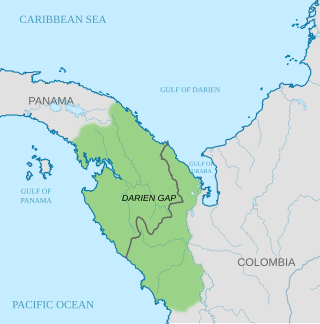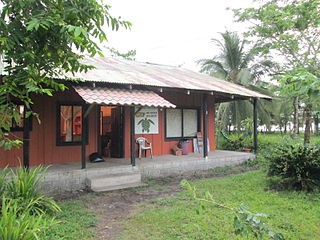Related Research Articles

Sea turtles, sometimes called marine turtles, are reptiles of the order Testudines and of the suborder Cryptodira. The seven existing species of sea turtles are the flatback, green, hawksbill, leatherback, loggerhead, Kemp's ridley, and olive ridley. Six of the seven sea turtle species, all but the flatback, are present in U.S. waters, and are listed as endangered and/or threatened under the Endangered Species Act. All but the flatback turtle are listed as threatened with extinction globally on the IUCN Red List of Threatened Species. The flatback turtle is found only in the waters of Australia, Papua New Guinea, and Indonesia.

The leatherback sea turtle, sometimes called the lute turtle, leathery turtle or simply the luth, is the largest of all living turtles and the heaviest non-crocodilian reptile, reaching lengths of up to 2.7 metres and weights of 500 kilograms (1,100 lb). It is the only living species in the genus Dermochelys and family Dermochelyidae. It can easily be differentiated from other modern sea turtles by its lack of a bony shell; instead, its carapace is covered by oily flesh and flexible, leather-like skin, for which it is named. Leatherback turtles have a global range, although there are multiple distinct subpopulations. The species as a whole is considered vulnerable, and some of its subpopulations are critically endangered.

The olive ridley sea turtle, also known commonly as the Pacific ridley sea turtle, is a species of turtle in the family Cheloniidae. The species is the second-smallest and most abundant of all sea turtles found in the world. L. olivacea is found in warm and tropical waters, primarily in the Pacific and Indian Oceans, but also in the warm waters of the Atlantic Ocean.

The loggerhead sea turtle is a species of oceanic turtle distributed throughout the world. It is a marine reptile, belonging to the family Cheloniidae. The average loggerhead measures around 90 cm (35 in) in carapace length when fully grown. The adult loggerhead sea turtle weighs approximately 135 kg (298 lb), with the largest specimens weighing in at more than 450 kg (1,000 lb). The skin ranges from yellow to brown in color, and the shell is typically reddish brown. No external differences in sex are seen until the turtle becomes an adult, the most obvious difference being the adult males have thicker tails and shorter plastrons than the females.

The green sea turtle, also known as the green turtle, black (sea) turtle or Pacific green turtle, is a species of large sea turtle of the family Cheloniidae. It is the only species in the genus Chelonia. Its range extends throughout tropical and subtropical seas around the world, with two distinct populations in the Atlantic and Pacific Oceans, but it is also found in the Indian Ocean. The common name refers to the usually green fat found beneath its carapace, not to the color of its carapace, which is olive to black.

Mon Repos Conservation Park is a national park containing an important turtle rookery located at Mon Repos, Bundaberg Region, Queensland, Australia, 14 kilometres (8.7 mi) east of Bundaberg. Mon Repos hosts the largest concentration of nesting marine turtles on the eastern Australian mainland and supports the most significant nesting population of the endangered loggerhead turtle in the South Pacific Ocean. Successful breeding here is critical if the loggerhead species is to survive. In far smaller numbers the flatback and green turtles and, intermittently, the leatherback turtle also nest along the Bundaberg coast.

Las Baulas de Guanacaste Marine National Park is a National Park of Costa Rica and a Ramsar Site. The park is managed by the Tempisque Conservation Area, and covers approximately a 167.3 square kilometres (64.6 sq mi) marine area of the Tamarindo Bay, next to the town of Tamarindo. It supports the largest nesting colony of leatherback sea turtles on the Pacific coast of the Americas. Female leatherbacks often come ashore at Playa Grande between October and May to lay their eggs.
Iguanita Wildlife Refuge is a wildlife refuge in the Guanacaste Conservation Area located in the Guanacaste Province of northwestern Costa Rica.

Playa Grande, also known as Salinas, is a beach community on the Pacific coast of Costa Rica just north of Tamarindo. It is located inside the canton of Santa Cruz in Guanacaste Province. Playa Grande has been part of the Parque Nacional Marino Las Baulas since 1990. There are palm trees and vegetation around the beach, which stretches for about 4.5 kilometers. It is part of the Las Baulas National Marine Park, which was established to protect the nesting grounds of endangered leatherback turtles. Playa Grande is one of the major nesting sites for these turtles, and visitors can witness the nesting and hatching process during the nesting season, which typically occurs from October to March. The main attraction of Playa Grande is its surf breaks. The beach has consistent waves. Playa Grande is an ideal destination for nature lovers, with diverse ecosystems surrounding it. Beyond the beach, you can explore the nearby mangrove forests, take boat tours along the estuaries, or venture into the neighboring national parks, such as Rincon de la Vieja or Santa Rosa, which offer hiking trails, wildlife spotting opportunities, and breathtaking landscapes.

Playona Acandí Fauna and Flora Sanctuary is one of eleven new national parks in Colombia. It is the home of the Cana Turtle. This park is on the Caribbean coast of the Department of Chocó. The Playon Playona Acandí Fauna and Flora Sanctuary is a strategic area for the survival of the hawksbill and leatherback turtles, the latter considered to be the world's largest sea turtle.
The Sea Turtle Restoration Project (STRP), founded in 1989, is a project of Turtle Island Restoration Network (TIRN), a United States 501(c)(3) nonprofit environmental organization with a goal of protecting endangered sea turtles from human-caused threats at nesting beaches and in the ocean.
Ecology Project International is a non-profit organization based in Missoula, Montana, dedicated to developing place-based, ecological education partnerships between local experts and youth to address conservation issues. Ecology Project International (EPI) works with students and educators at seven program sites around the world: Belize, Costa Rica, mainland Ecuador, Galápagos Islands, Hawaii, Mexico, and Yellowstone.

Threats to sea turtles are numerous and have caused many sea turtle species to be endangered. Of the seven extant species of sea turtles, six in the family Cheloniidae and one in the family Dermochelyidae, all are listed on the IUCN Red List of Endangered Species. The list classifies six species of sea turtle as "threatened", two of them as "critically endangered", one as "endangered" and three as "vulnerable". The flatback sea turtle is classified as "data deficient" which means that there is insufficient information available for a proper assessment of conservation status. Although sea turtles usually lay around one hundred eggs at a time, on average only one of the eggs from the nest will survive to adulthood. While many of the things that endanger these hatchlings are natural, such as predators including sharks, raccoons, foxes, and seagulls, many new threats to the sea turtle species are anthropogenic.

The Canadian Organization for Tropical Education and Rainforest Conservation (COTERC) is a registered not-for-profit Canadian-based charity. COTERC was founded in 1991 by Marilyn Cole and Ozzie Teichner, and is based in Pickering, Ontario, Canada. COTERC maintains a close reciprocal relationship in Costa Rica with Caño Palma Biological Station.
Playa Grande may refer to:

Asociación Salvemos las Tortugas de Parismina (Spanish), is a community-based, non profit, conservation organization based in Parismina, Costa Rica, dedicated to protecting sea turtles and their eggs from poaching while initiating sustainable development and providing a viable alternative economy to poaching in the village.

Jairo Mora Sandoval was a Costa Rican environmentalist who was murdered while attempting to protect leatherback turtle nests. Just before midnight on May 30, 2013, Mora and four female volunteers were abducted by a group of masked men. The women eventually escaped and informed the police. Mora's bound and beaten body was found on the beach the next morning. An autopsy determined he died by asphyxiation after suffering a blow to the head.

The gulf ghost crab, Hoplocypode occidentalis, is a species of ghost crabs native to the Pacific coast of the Americas, from the Gulf of California to Colombia. It is the only species in the genus Hoplocypode. Gulf ghost crabs are medium-sized, reaching a maximum overall body diameter of 6 in (15 cm). They are one of only two ghost crab species found in the eastern Pacific. However, gulf ghost crabs can easily be distinguished from painted ghost crabs by the absence of "horns" on their eyes.

The Costa Rica Thermal Dome, is an oceanographic feature and marine biodiversity hotspot that varies in size from 300 to 1,000 km in diameter. The dome is located off the western coast of Central America in the Tropical Eastern Pacific. Through the interaction of wind and ocean currents, deeper waters are drawn towards the surface in a dome-like shape at this location. These waters displace the warmer, nutrient-poor waters with colder, nutrient-richer waters. An investigation by UNESCO'S World Heritage Site and International Union for Conservation of nature (IUCN) in 2016 considered it eligible to become a World Heritage Site in the near future.

Nathan Jack Robinson is a marine biologist and science communicator from the United Kingdom. During his career, Robinson has been at the center of several viral videos. These have included videos of him removing a plastic drinking straw from the nostril of a sea turtle as well as a plastic fork from the nostril of a different sea turtle, and a video recorded by him and Edith Widder of a live giant squid. This video is the first-time that a live giant squid has been recorded in US waters and is the second time this species has ever been caught alive on film.
References
- ↑ www.leatherback.org http://www.leatherback.org . Retrieved 10 September 2012.
{{cite web}}: Missing or empty|title=(help)[ title missing ] - ↑ http://www.seaturtlestatus.org/report/view. Volume 1.
- ↑ Spotila, J.R., Paladino, F.V. (2004) Parque Marino Las Baulas. In Biodiversity conservation in Costa Rica: learning the lessons in a seasonal dry forest by Frankie, G.W., Mata, A., Vinson, S.B. University of California Press.
- ↑ Santidrián Tomillo, P., Saba, V.S., Piedra, R., Paladino, F.V., Spotila, J.R. (2008) Effects of illegal harvest of eggs on the population decline of leatherback turtles in Las Baulas Marine National Park, Costa Rica. Conservation Biology 22: 1216 – 1224.
- ↑ http://www.wildlifeextra.com/go/news/leatherback-race.html#cr. Retrieved 10 September 2012.</
- ↑ Saving Sea Turtles, James R. Spotila, Johns Hopkins Press, 2011.</
- ↑ http://goldringmarinestation.org/Goldring/CheerForTheTurtles.html. Retrieved 10 September 2012.</